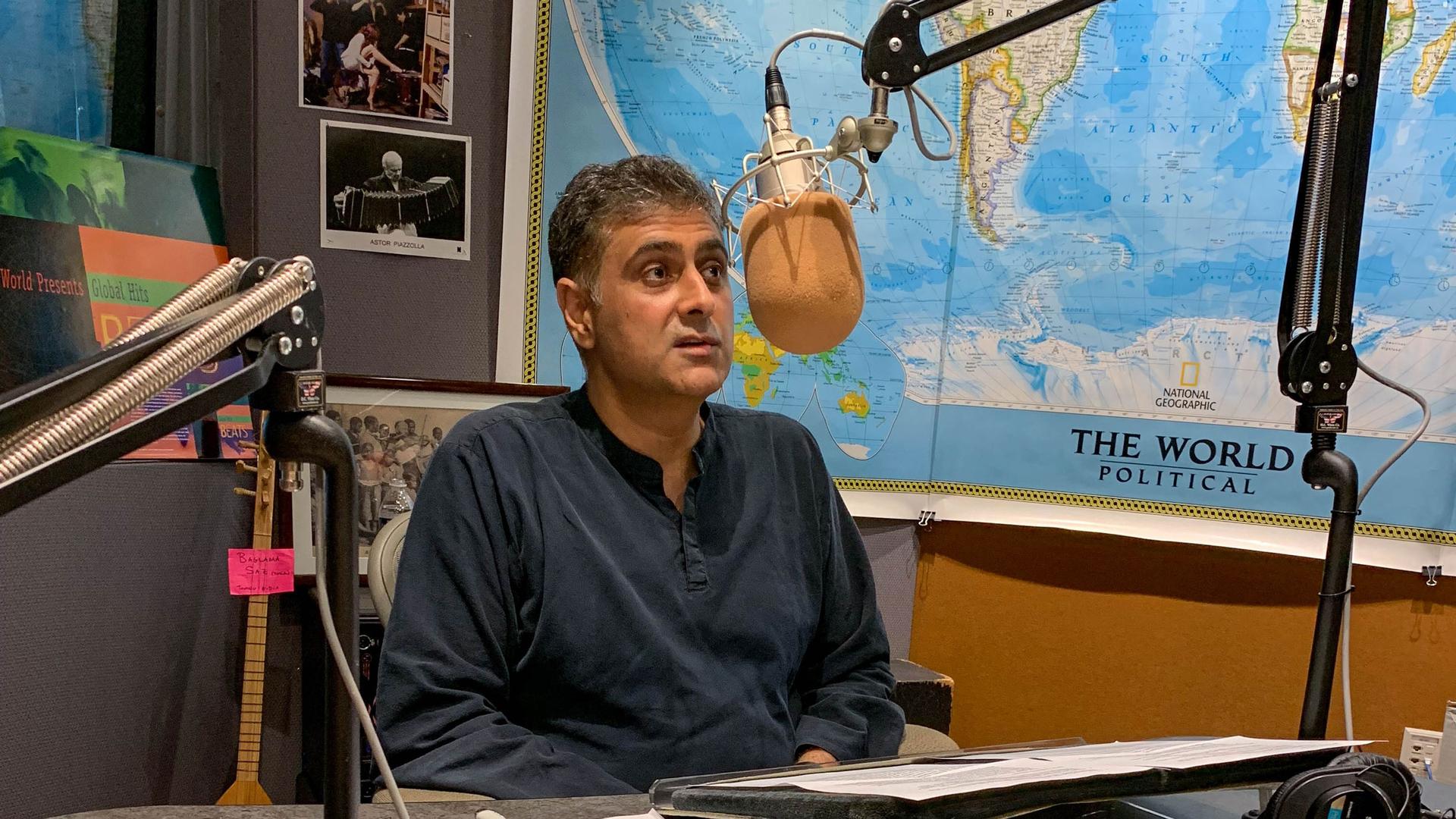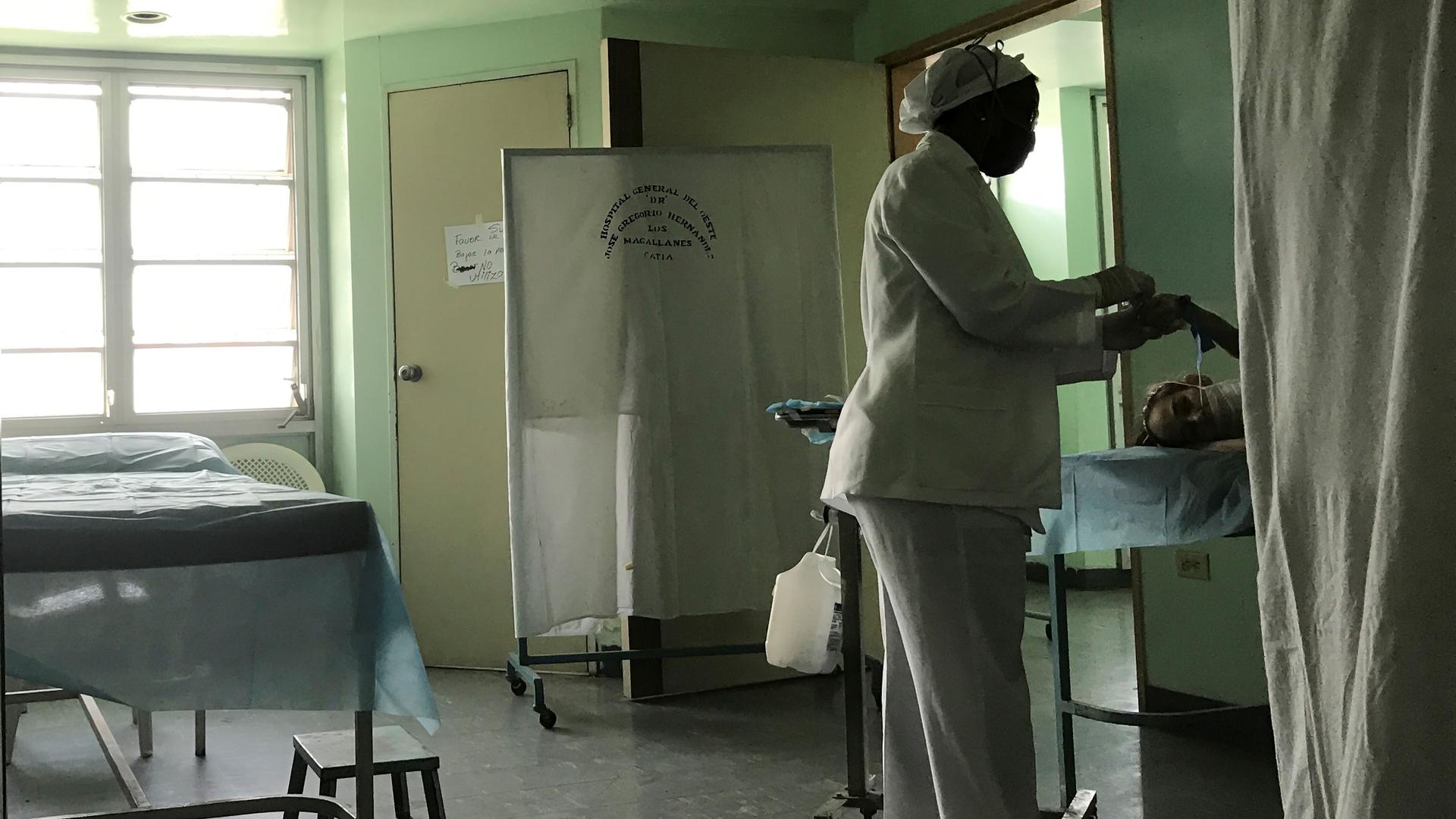Hope for tuberculosis patients: FDA approves treatment for deadliest strain of drug-resistant TB
A nurse assists an HIV-positive and tuberculosis patient at the Jose Gregorio Hernandez hospital in the slum of Catia in Caracas, Venezuela, on Nov. 20, 2018.
For the first time, scientists have found a treatment for extensively drug-resistant tuberculosis — a disease that, so far, was near-impossible to cure. In a groundbreaking development, the results show that the drugs will save most patients’ lives in a few months.
Tuberculosis is the deadliest infectious disease in the world, killing about 1.6 million people globally in 2017, according to the World Health Organization (WHO), and drug-resistant strains make the disease even harder to contain.
The US Food and Drug Administration (FDA) has approved the treatment for drug-resistant tuberculosis as part of a three-drug combination regimen called BPaL, TB Alliance, a nonprofit, said Wednesday.
Related: A raging TB epidemic in Papua New Guinea threatens to destabilize the entire Asia Pacific
The decision comes two months after a panel of advisers to the FDA voted 14-4 in favor of the drug, pretomanid, in combination with linezolid and bedaquiline for multi-drug resistant tuberculosis (MDR-TB) and extensively drug-resistant tuberculosis (XDR-TB).
TB Alliance’s oral, six-month treatment regimen stands out from current treatment options, which use a cocktail of antibiotic drugs over a period of up to two years.
Related: Trudeau apologizes for mistreatment of Inuit during tuberculosis epidemic
MDR-TB and XDR-TB are forms of tuberculosis that do not respond to first-line anti-TB drugs. XDR-TB, a more serious form of MDR-TB, is unresponsive even to the two most powerful anti-TB drugs — isoniazid and rifampicin — in addition to being resistant to certain second-line treatments.
WHO estimates that there were more than 500,000 global cases of rifampicin-resistant TB in 2017, 82% of which were MDR-TB cases. About 8.5% of MDR-TB cases had XDR-TB in the same year.
Related: This map shows which is the deadliest infectious disease where you live
Host Carol Hills speaks with longtime TB doctor and global health specialist Salmaan Keshavjee, a professor at Harvard University, about the new drug and the challenges of getting it to people who need it most.
Carol Hills: You’re headed to Russia this week — you are on the ground, you’re treating patients directly with this really tough strain of TB. What’s it like on the ground dealing with patients?
Salmaan Keshavjee: The province that I’m going to this week, Vladimir, is one of the provinces in Russia that’s really taken this on. They’re trying to bring TB rates down rapidly.
It’s a tough game to do this right. If you find a TB patient that shows up to you —that’s great. You can treat them, and even that’s tough, but to stop the disease, to stop the spread, you have to screen their families and contacts, you have to get them to come in for X-rays. Then those people who test positive for infection — so they don’t have the disease but they’ve been exposed — you need to give them some sort of prophylactic treatment. Then, following up and delivering care in conditions that are cold — parts of Russia go down to minus 20, minus 30, minus 40 Celsius — and then the patient experience is tough.
Up to now, we’ve been using these injectable agents and so visualize [this]: You get a shot in your arm for the flu and it kind of hurts for a day or two; visualize getting an injection every single day in one of your large muscles — on your leg or in your arm — six days a week for nine months. You can imagine that after 10 or 12 days it gets very old, and you’re in pain, and you have trouble walking. And so to help the patients through this and to see what they’re going through as they’re taking these medicines has really been difficult. So, I think this new drug and the other drugs that we’re using — … injectable agents, … agents that make people vomit the minute they smell it, agents that make people have psychiatric trouble — if we can get rid of those agents and use some of these new agents, it would be amazing.

How big of a deal is this?
We haven’t had many new drugs — a lot of the drugs for TB were made in the 1940s, 1950s and 1960s, and then there was this hiatus, and we didn’t really get any new drugs for about 40 years. So this gives a lot of hope because in that period … there’s been a lot of drug resistance that has developed. In fact, TB is now one of the biggest contributors to global anti-microbial resistance. So having drugs to fight the disease — better than we’ve had in the past — is really important.
Tell us about this drug: What is it and what makes it so effective?
This new drug has received approval for treatment of very drug-resistant tuberculosis. And that’s a problem because when you get TB, if you get the right medicines, you have about a 95, or close to 100% cure rate. But if you get drug-resistant TB, your cure rate drops to about 50%, and if you get very drug-resistant TB, it drops to even less — about 30 or 40%. And since this can treat the very drug-resistant strains, it offers an incredible amount of hope to people who suffer from this disease.
And where around the world do you find the most drug-resistant forms of TB?
Countries of Eastern Europe have a very high proportion of cases. So, for example, in Belarus, more than half the cases of TB were drug-resistant, starting some years ago. But you also see it in countries like India. India has the highest burden of disease in the world. And, although it’s drug-resistance levels are low nationwide, across 1.4 billion people. If you go to cities like [Mumbai], you’re looking at a quarter or more patients in Mumbai that have drug-resistant disease. And so there’s pockets of drug resistance almost everywhere — India, China, Indonesia. So it’s an important problem. And if you treat regular TB and you don’t treat drug-resistant TB, it becomes an even bigger problem, because TB is spread in the air. It’s an airborne disease. So if you treat one strain but not another, the other strain will overtake and become the predominant strain.
We’ve got this new drug. Studies show it can be very effective for this incredibly drug-resistant TB. How do we get it to the people who need it?
Well, that’s the million or billion dollar question! You know, some years ago, in 2012, we got another new drug. And in 2014, we got another new drug. And when people came to me and said, “Oh, wow, there’s this new drug coming out, we will we use a lot of it,” [but] in my mind’s eye — there’s 500,000 people with drug-resistant TB each year — I thought, ‘Wow, well, surely, we’re going to treat 100,000 of them in the first year with this new drug [that] is so fantastic, right?” Well, it turns out there’s a couple of things that stop you from getting it to people.
One is that a lot of the new drugs aren’t registered everywhere — there’s price differentials that affect access. There’s also the ability for health systems to find the patients that have drug-resistant disease. For years, people were just looking at patients that they thought were sick. You know, they would have them cough up sputum and they would look at it under a microscope and see if TB was there. It’s a really ineffective approach to diagnosing the disease, and now we have better approaches using X-ray and genetic approaches. But you have to have access to that. And people are building up access over time, but that’s taking time. So, you have to be able to find the patients, and then you have to be able to have a system that has the drugs. So, they have to be available in your country, you need to be able to stock them, and then you actually have to be able to deliver them to the patients and monitor for side effects and follow them up.
So these are the challenges: You make a new drug but we haven’t invested in the access aspects of it.
At this point, are there any countries where there are people who need this drug — where the systems are set up and those kinds of approvals and access are available?
Well, I would say a good example is South Africa. South Africa is using the other new drugs. They have set up a system to screen for drug resistance in all patients. They’re increasingly using X-ray, which is what we used here in the United States many years ago when we had a TB problem, and they’re able to monitor their patients, so South Africa is a great example. Countries like Russia have the health systems to be able to do this. So, I think that there are examples where it does work — if you do this combination of search, treat, and prevent, we know that you can bring down rates of TB. And it’s been shown here in the United States, and in a lot of other places that have done that.
Reuters contributed to this report.
